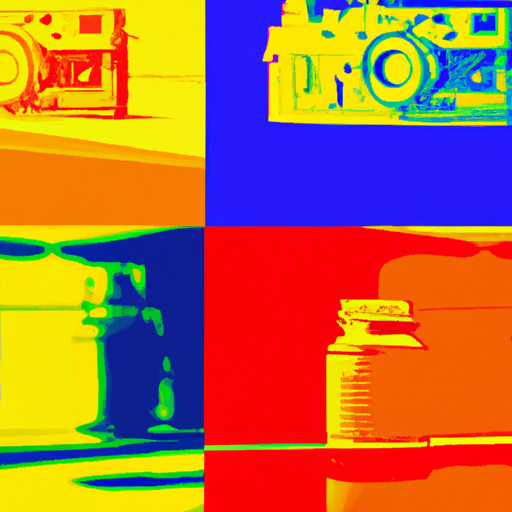-
Table of Contents
Innovations in Print Design Techniques
Print design has come a long way since the invention of the printing press. With advancements in technology and the ever-evolving needs of businesses and consumers, print design techniques have continuously evolved to meet the demands of the modern world. In this article, we will explore some of the most innovative print design techniques that have emerged in recent years, and how they have revolutionized the industry.
1. Interactive Print
One of the most exciting innovations in print design is the concept of interactive print. Interactive print combines traditional print design with digital elements to create a truly immersive and engaging experience for the reader. This technique allows readers to interact with printed materials using their smartphones or other digital devices.
For example, a magazine advertisement can include a QR code that, when scanned, takes the reader to a website or a video related to the product being advertised. This not only enhances the reader’s experience but also provides valuable data to advertisers about the effectiveness of their print campaigns.
Another example of interactive print is the use of augmented reality (AR) technology. AR allows printed materials to come to life by overlaying digital content onto the physical world. For instance, a brochure for a travel agency can use AR to show potential customers a virtual tour of a destination, giving them a taste of what they can expect.
2. Variable Data Printing
Variable data printing (VDP) is a technique that allows for the customization of printed materials on an individual level. This technique uses digital printing technology to personalize each printed piece with unique text, images, or other elements based on the recipient’s data.
For example, a direct mail campaign can use VDP to address each recipient by name and include personalized offers based on their previous purchases or preferences. This level of personalization not only increases the effectiveness of the campaign but also creates a more meaningful connection between the brand and the recipient.
VDP has been proven to significantly improve response rates and ROI in direct mail campaigns. According to a study by InfoTrends, personalized direct mail can generate response rates up to 50% higher than non-personalized mailings.
3. Specialty Inks and Finishes
Advancements in printing technology have also led to the development of a wide range of specialty inks and finishes that can add a unique and eye-catching element to printed materials. These inks and finishes can create visual and tactile effects that make printed pieces stand out from the crowd.
One example of a specialty ink is thermochromic ink, which changes color when exposed to heat. This ink can be used to create interactive elements in printed materials, such as revealing hidden messages or images when touched or heated.
Another example is metallic ink, which contains small metallic particles that give printed materials a shiny and reflective appearance. Metallic ink is often used in packaging design to create a premium and luxurious feel.
Specialty finishes, such as embossing and spot UV coating, can also add texture and depth to printed materials. Embossing creates raised or recessed areas on the paper, while spot UV coating adds a glossy and raised effect to specific areas of the design.
4. Sustainable Printing
In recent years, there has been a growing demand for sustainable and eco-friendly printing practices. Print design techniques have evolved to meet this demand by incorporating environmentally friendly materials and processes.
One example of a sustainable printing technique is the use of soy-based inks instead of traditional petroleum-based inks. Soy-based inks are made from renewable resources and produce fewer volatile organic compounds (VOCs), reducing their impact on the environment.
Another innovation in sustainable printing is the use of recycled paper and cardstock. Recycled paper is made from post-consumer waste, such as old newspapers and magazines, reducing the need for virgin materials and minimizing deforestation.
Additionally, advancements in printing technology have made it possible to reduce waste and energy consumption. Digital printing, for example, allows for on-demand printing, eliminating the need for large print runs and reducing excess inventory.
5. 3D Printing
While 3D printing is primarily associated with the manufacturing industry, it has also found its way into the world of print design. 3D printing allows designers to create three-dimensional objects with intricate details that were previously impossible to achieve with traditional printing techniques.
For example, 3D printing can be used to create custom packaging designs that perfectly fit a product, eliminating the need for excess packaging materials. It can also be used to create unique promotional items or prototypes for product development.
3D printing opens up a world of possibilities for print designers, allowing them to create highly personalized and innovative printed materials that truly stand out.
Summary
Innovations in print design techniques have transformed the industry, making printed materials more interactive, personalized, visually appealing, and sustainable. Interactive print combines traditional print design with digital elements, creating immersive experiences for readers. Variable data printing allows for personalized and targeted campaigns, increasing response rates and ROI. Specialty inks and finishes add unique visual and tactile effects to printed materials, making them stand out. Sustainable printing practices incorporate eco-friendly materials and processes, reducing the environmental impact. Finally, 3D printing opens up new possibilities for creating highly personalized and innovative printed materials.
As technology continues to advance, we can expect even more exciting innovations in print design techniques, further pushing the boundaries of what is possible in the world of print.
